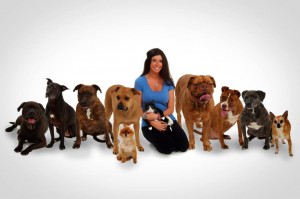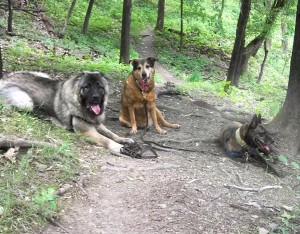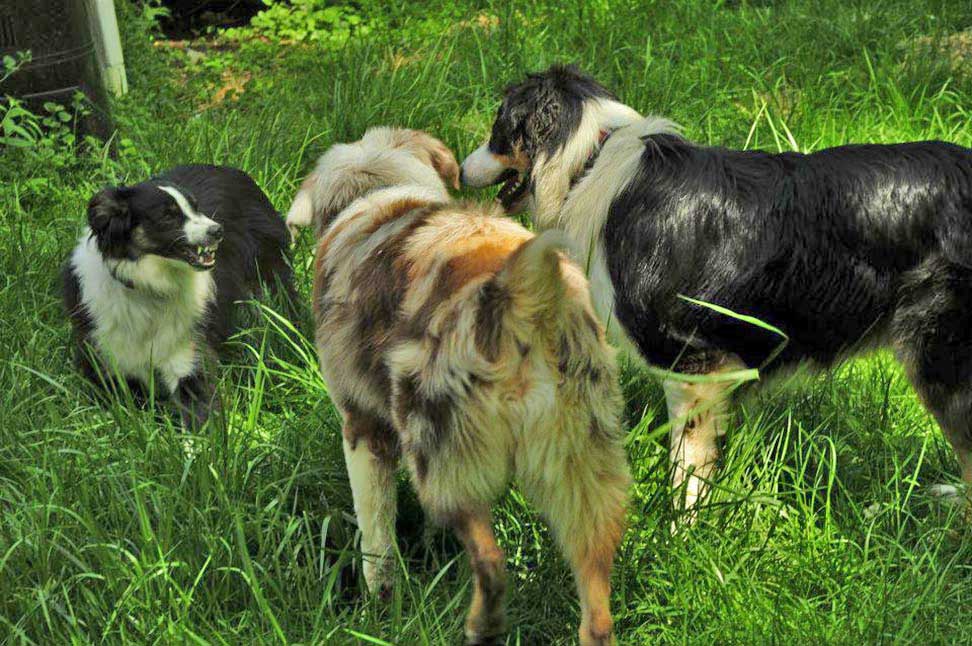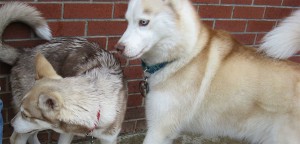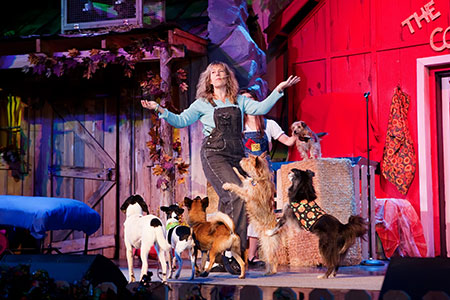Sweet Dreams are Made of These: Should Your Crew Sleep With You?
If I had a dollar for every time a client apologized before telling me that their dog(s) sleep with them, I could have retired by now. Old school style training dictated that dogs not be allowed on raised surfaces or they would consider themselves of equal or higher status than their ‘masters’. *insert eye roll here*
The only time sleeping in the human bed is advised against is if there are guarding issues of some sort. Guarding, in this case, can pertain to the space on the bed. Guarding from the humans is a biggie that needs addressed in person with a qualified modern methods behavior consultant. Guarding from other canines or even felines is also an issue that needs addressed with a similarly qualified professional. But overall, that provides less of a threat to the humans, aside from breaking up a fight, that is. I am obviously not going to give advice on these issues here. On the spot assistance is what you need if these issues ring a bell.
Aside from the previously mentioned red flags, sharing the bed is fine, if that is what you wish to do. Of course, if you don’t wish to share your bed with your dogs, I am not here to say you must or your dogs will suffer. What I will share with you is this: dogs feel so much safer being permitted to sleep in the vicinity of their human family members. It doesn’t matter whether it’s on your bed or in their own bed in your room or that of another family member. Even being permitted to be on the same floor as the sleeping area is better than not.
Safety: we have discussed that here before. Safety is a crucial feeling to all sentient creatures. Safety is vital to survival. Safety provides emotional and physical security. The amount of stress a lack of safety adds to an emotional state cannot be overstated.
 Familial bonding is another often overlooked facet of this scenario. For example, most households have some sort of regular weekday work or school schedule that prevents a lot of bonding and togetherness during the workweek, whether that be weekdays or just several days strung together where the canines in the family get less interaction than they need for emotional stability. Consider then that the dogs in the home may sleep separately from the humans and you have very little togetherness going on.
Familial bonding is another often overlooked facet of this scenario. For example, most households have some sort of regular weekday work or school schedule that prevents a lot of bonding and togetherness during the workweek, whether that be weekdays or just several days strung together where the canines in the family get less interaction than they need for emotional stability. Consider then that the dogs in the home may sleep separately from the humans and you have very little togetherness going on.
The easiest way that involves very little effort, once the routine is established, is to permit your crew to sleep in the vicinity of the humans for whom they care for. It involves little effort once, you get past the novelty, if you are new to this. And it is rewarding for all involved.
I often get quizzed on why dogs who don’t sleep near their humans are so needy on workday evenings. The answer is that they spend so little time together on these days. Sleeping in the same area is an easy way to remedy that situation. Less neediness on the dogs side, more peace on both sides.
What if you have allergies? Well, some of you are not going to like my answer on that but here goes. Allergies are over-exaggerated, in my opinion. I am allergic to just about everything, including dogs. So my take on that is if you are able to have and love on your dog, you are able to sleep in the same room as your dog. Just limit them to their own beds, rather than yours.
So what if you don’t have room for all your dogs in your bed or even your room? After all, if you are reading this, you are very likely a multiple dog household of some quantity and not all households have human beds big enough for the humans and all the canines! So the solution to that is providing plenty of comfy sleeping surfaces and options for all dogs who reside there. If there is sufficient room in the bedroom, then place beds all over that room. If there are multiple family members, consider both canine and human preferences for favorites and plan from there. A word on that however: some children or even adult family members may permit too many privileges for a dog that may not be ready for such privileges so keep that in mind when choosing sleeping places.
Some readers are likely wondering about dogs that don’t want to sleep near their humans. Some dogs may prefer a bed in a close by empty bedroom or a dog bed in a hallway nearby. But in that case, what is important is that the choice of where to sleep is there. Meaning, the dog(s) has/have the run of the house at night and chooses this alternate spot. What I strongly advise against is crating day and night, away from the humans. Not only is it cruel physically, it’s emotionally isolating. Obviously puppies need crated or otherwise have their movement restricted at night for safety concerns. But said crate should be in the vicinity of a human family member.
The difference in the emotional neediness is obvious when sleeping safety is considered. Easy bonding while sleeping can only be beneficial. Please share how you arrange your crew’s sleeping routines in the spaces below. And sweet dreams!
Posted in: Projects
Leave a Comment (4) →




